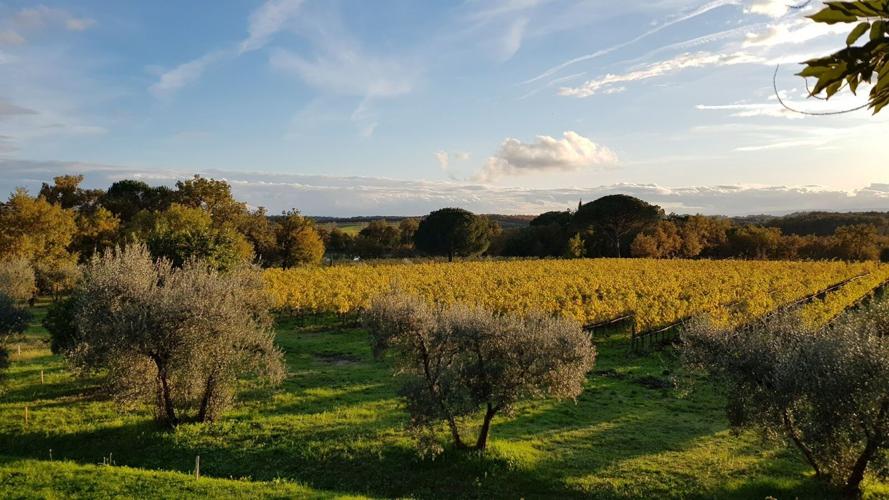
In the center of Italy, under the rolling hills and golden sun of Umbria, a revolution is quietly germinating. It is not new and yet is only just emerging. It is old as words and as essential as memory. It is the tale of Radici a groundbreaking research project that is more about origin, identity, and time itself than it is about wine.
Where wine first made itself heard
Long before the Etruscans came to claim the peninsula, and long before the Romans offered sacrifices to their gods, the central areas of today's Umbria may already have been softly whispering the term "wine." Researchers are examining the possibility that it was here in these same fields that the viticulture of Italy was first initiated.
The Radici project, or "roots" in Italian, was born out of this question. Where and when did wine initially become more than food and become symbolic and sacred? Funded by Umbria Top Wines and supported by leading institutions and universities, Radici brings together historians, archaeologists, agronomists and cultural experts to find out. But they are not looking for answers in the future. They are looking for answers in the past.
From grape to glass to ground

What is so wonderful about this project is that it turns the wine story around. We are always talking in the present tense of terroir and tradition. But what if we followed the wine in our glass backward not back to the cellar, not back to the vineyard but back to ancient rituals, pre-Roman ceremonies, and the earliest whispers of agriculture?
That is Radici's mission. Its scientists are mapping the plant and environmental specificity of the area, but also revealing lost documents, agricultural artifacts, and the multi-layered cultural memory that imbues Umbrian wine with its identity today. It is a scientific and poetic project.
As Gioia Bacoccoli, the coordinator of Umbria Top Wines, puts it, "This is not only a book. It is a declaration of belonging and a collective act of memory." Radici is imagined as a dynamic journey of discovery half treasure hunt, half cultural awakening. Glass in hand and then in the earth, and finally at the root, the team is reconstructing the history of one of Italy's most unassuming wine territories.
A wine that speaks of history and humanity
Wine in Umbria is not just an agricultural product. It is an emblem of culture, an expression of place and people concentrated into a product. In the research that Radici is carrying out, wine is not just a luxury. It is a ritual, a season marker and a family heirloom passed from generation to generation.
Luigi Mundula, director of the MICO program of the University for Foreigners of Perugia, puts it best. "Wine is a concentrated expression of history and culture. It is an intangible heritage of mankind. This makes it a necessary component of this unique and irreproducible land—not only because of its historical origins but also because of its festivals, its rituals, and its living memory."
This reframing places wine at the center of Umbria's spiritual identity. In an accelerating world, initiatives like Radici ground us in something slower, deeper, and more enduring. They remind us that there are some pleasures that are not merely sensorial and they are heritage.
A community of passion and knowledge

It is not merely Radici's ambition that is its strength, but its collaboration. It brings together researchers from the University of Perugia and the University for Foreigners of Perugia with 3A Technological Agrifood Park professionals, the Torgiano Wine Museum and the Italian Sommelier Association. There is richness brought to the overall greater good by each, producing a harmony of curiosity and respect.
Contributors to the book include such noted scholars as Giovanni Capecchi, Valentina Gasbarra, Roberto Montagnoli, Alessio Patalocco, Manuel Vaquero Piñeiro and Paolo Braconi, in addition to scholars Stefano Cimicchi and Luisa Spagnoli. Together, they seek to follow not only the ancient history of viticulture but also its applicability to the modern world specifically to the industries of wine tourism and sustainable territorial development.
Umbria's gift to the future
Radici's research is already being compiled into a book supplemented by new scientific articles and an impressive iconographic insert. But that is merely the start. The aim is to stir up further discussion, further research and wider recognition of Umbrian wine not as a product, but as a symbol of culture. For visitors to Umbria, a glass of regional wine will soon be served with a new sense of respect. Not just for the flavor or the craft but for the centuries of patient labor, the rituals of ancestors and the history still buried under the vines. As wealthy travelers and wine lovers both seek greater authenticity and significance in their experiences, Umbria offers something special a chance to taste history itself.




(0) comments
We welcome your comments
Log In
Post a comment as Guest
Keep it Clean. Please avoid obscene, vulgar, lewd, racist or sexually-oriented language.
PLEASE TURN OFF YOUR CAPS LOCK.
Don't Threaten. Threats of harming another person will not be tolerated.
Be Truthful. Don't knowingly lie about anyone or anything.
Be Nice. No racism, sexism or any sort of -ism that is degrading to another person.
Be Proactive. Use the 'Report' link on each comment to let us know of abusive posts.
Share with Us. We'd love to hear eyewitness accounts, the history behind an article.